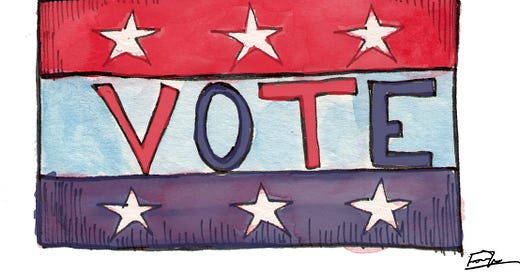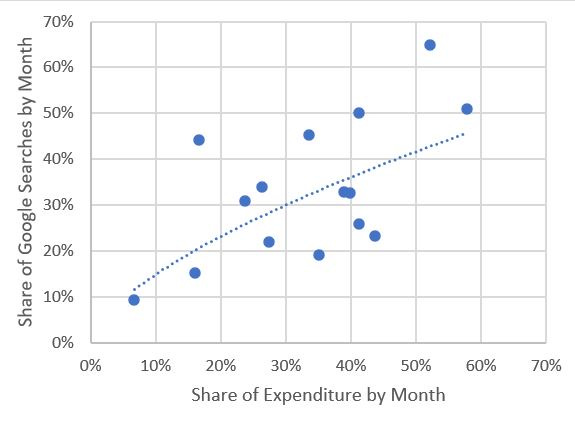This week, I watched a few classic episodes of Mad Men, the New York City workplace drama about a ragtag group of underdogs navigating the mainstream ad industry. As Don Draper equated Muhammad Ali’s knockout of Sonny Liston with the strength of a Samsonite suitcase, I was thinking about advertising in NYC politics.
I would love to see how SCDP would handle the NYC mayoral election. Imagine the stinging Twitter shade from Peggy or the electrifying subway posters from Stan.
I am not trying to be cynical or critical. I am pointing out that both “campaigns” involve spending money, time, and human power to influence behavior.
It is nearly impossible to objectively measure a candidate. We the voters have to be forward thinking, not present or past in thought, which is really difficult. How does experience in one job relate to the new duties in another? How does one’s ideology relate to ability to cooperate with others? Do we even know the exact powers of the office in question? Are we all just victims of the Peter Principle?
Assuming there is integrity and honesty behind political advertisements, they provide a necessary digestible thumbnail for the average person to make an educated decision. That is why 2xParked is investigating political spending in New York City this week.
Get Out the Vote
Starting with the 2013 election, New York City politicians have spent over $200 million dollars on their campaigns. This only includes spending of city government elections. This does not include federal elections (such as Donovan v. Rose) or state elections (such as Cuomo v. Nixon) or spending by non-candidate organizations.
There have been ample academic studies on the relationship between spending and winning. Most of these studies are flawed for two reasons. (1) They ignore the fact there are usually many simultaneous elections happening at the same time. (2) Modeling out the “base”, i.e. people who will vote regardless of spending, requires advanced statistical rigor.
I instead attempted to calculate the ROI to get out the vote in New York City. Looking at (mostly) NYC based election cycles over the past decade, I modeled the amount of money spent vs the number of total votes. All of the voting messages happen at the same time, not just from a particular race.
Below is an estimate of the number of voters in the democratic primary this spring based on different spending levels for the primary season:
The shape is as we might expect. There is a diminishing return in each dollar spent in terms of getting someone to vote. For example, at around $30M spent, we expect each incremental vote to cost $100/vote. At the $100M spend mark, each incremental vote increases to $200/vote.
Remember, this is at a total spend level. We are looking at the number of voters at the polls, not necessarily who the person will vote for. Most of the spending is in the mayor race, but there will be costly city council races as well this year which will help drive people out to vote.
If You Ain’t First, You’re Last
One aspect of the 2020 presidential election which fascinated me was Mayor Bloomberg entering the race.
From a Ricky Bobby perspective (“if you ain’t first, you’re last”), his campaign can be viewed as a failure. From this perspective though, you could say the same about Warren and Saunders. The name of this game is winning.
What interests me is that Bloomberg went from 0 to 60 faster than a Jaguar driven by Don Draper. Despite not being considered for the earliest of primaries and dropping out soon after Super Tuesday, Bloomberg managed to acquire 59 delegates, just 4 fewer than Warren. You can’t “buy an election”, but having money can make you competitive. On Super Tuesday, Bloomberg received nearly 13% of the vote. If our two wealthiest candidates, Ray McGuire or Andrew Yang, spend an absurd amount, we expect they could get about 90K votes just by outspending.
On the other end of the spectrum is the value of just getting your name on the ballot. Not all 40+ candidates in this mayor’s election will make it to the end, but many will remain on the ballot while spending nearly nothing. Having your name on the ballot will earn you about 0.7% of the vote.
Between Spending and Voting
Even the best advertising does not yield immediate results. There is often a lagged impact where someone’s decision happens well after exposure.
Electoral campaigns also have a lagged impact. You have one shot to vote, and there is one deadline to get your vote in. This means the impact of campaign spending is difficult to quantify.
I looked at the 2013 mayoral race as a baseline. I compared the share of spending and subsequent share of Google searches for de Blasio, Liu, and Quinn in the five months prior to the election.
Although there is certainly a positive correlation, there are a lot of factors at play making it difficult to pinpoint exact impact. That being said, it seems like there is a relationship between spending and interest in a candidate. The rest is up to the candidate.
MayorModel
Today is the day that Andrew Yang has taken the “favorite” title from Eric Adams. I still do not have him with a huge lead though.
In the latest polls, his lead is a little inflated due to his active campaign and his name recognition. To his detractors, people personally like Yang, and likability is not a trait which should be discounted (but should be added to the model…if only I had that data).
"Election ROI" was drawn by Ink&thyme, drawing life's unforgettable moments. For unique art drawn just for you, check them out on Facebook and on Instagram.
To subscribe to future newsletters, click here.
For more content, follow 2xParked on Twitter @2xParked.
Comments? Suggestions? Questions? Email me at 2xParked@gmail.com.







